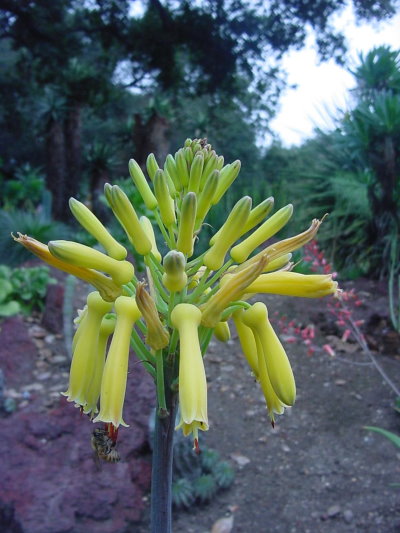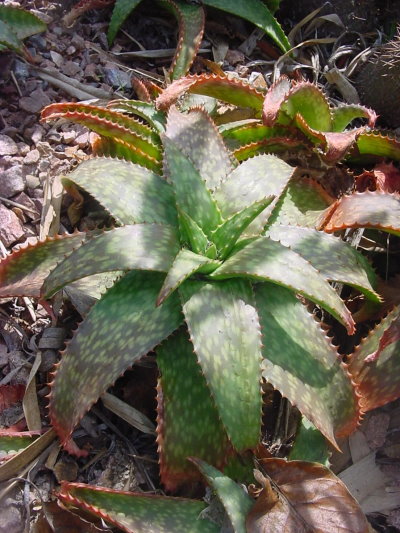|
Aloe saponaria, aka soap aloe or African aloe, has a
rosette that is up to 1-1/2' tall and about the same width with lance-shaped
leaves that are thick and succulent, armed on the margin by sharp, dark-brown
teeth, and pale green with white blotches or spots. The name comes from
the Latin sapo for soap, and saponaceus means soapy. Sap from
the succulent leaves makes a sudsy foam in water and thus can be used
as a soap substitute. Its synonymous name maculata refers to the white
spots on the leaves. Soap aloe is native to arid regions of South Africa,
Botswana and Zimbabwe, and is a very drought-tolerant species. During
the summer it sends up a branched stalk about 2' tall, bearing showy
tubular yellow, orange or red flowers. It propagates by producing little
"pup" rosettes around the main one
|

